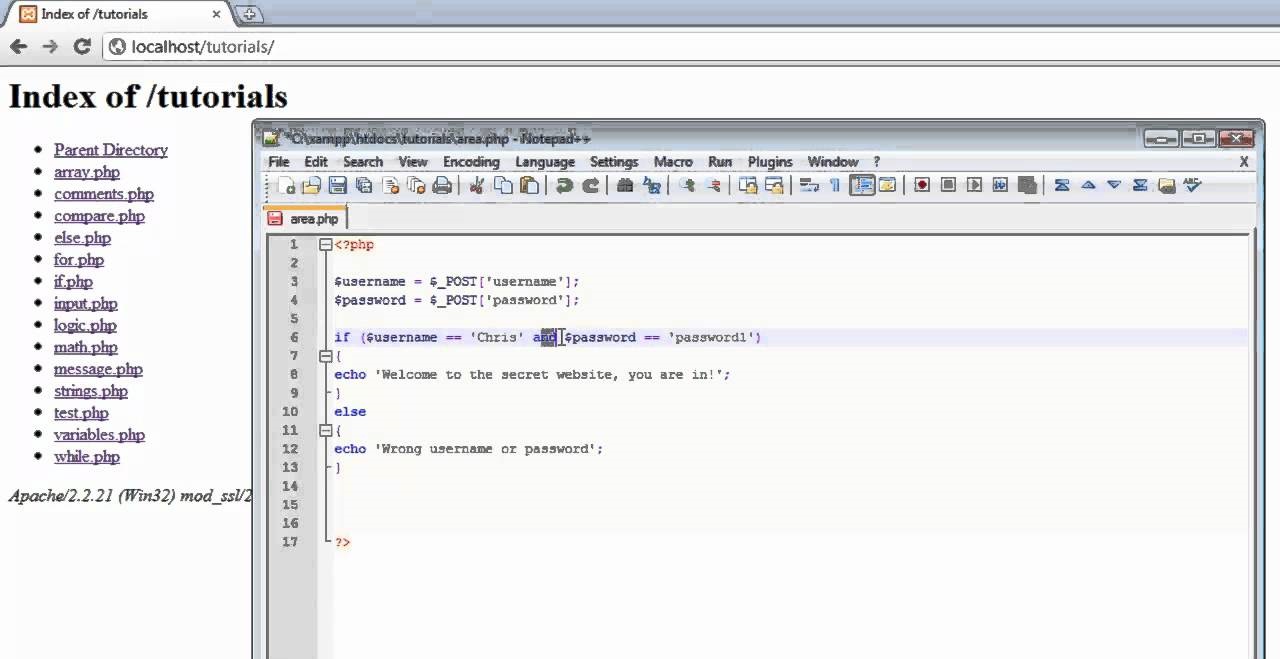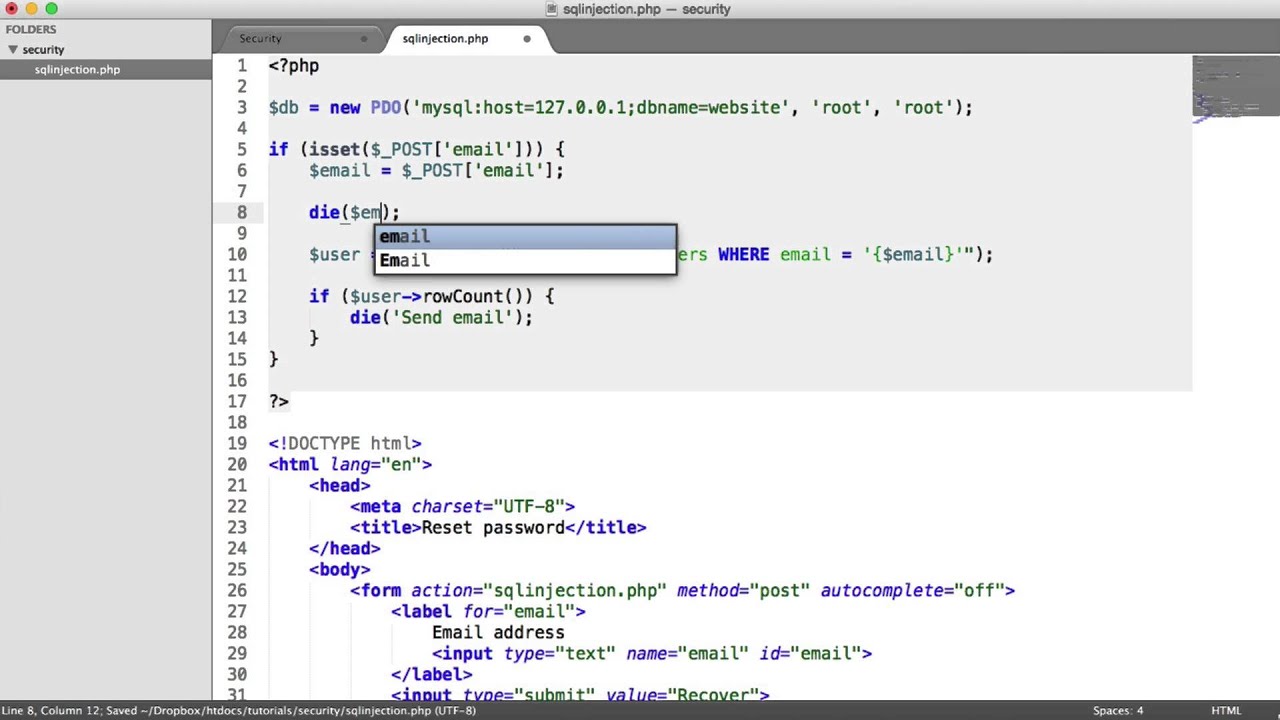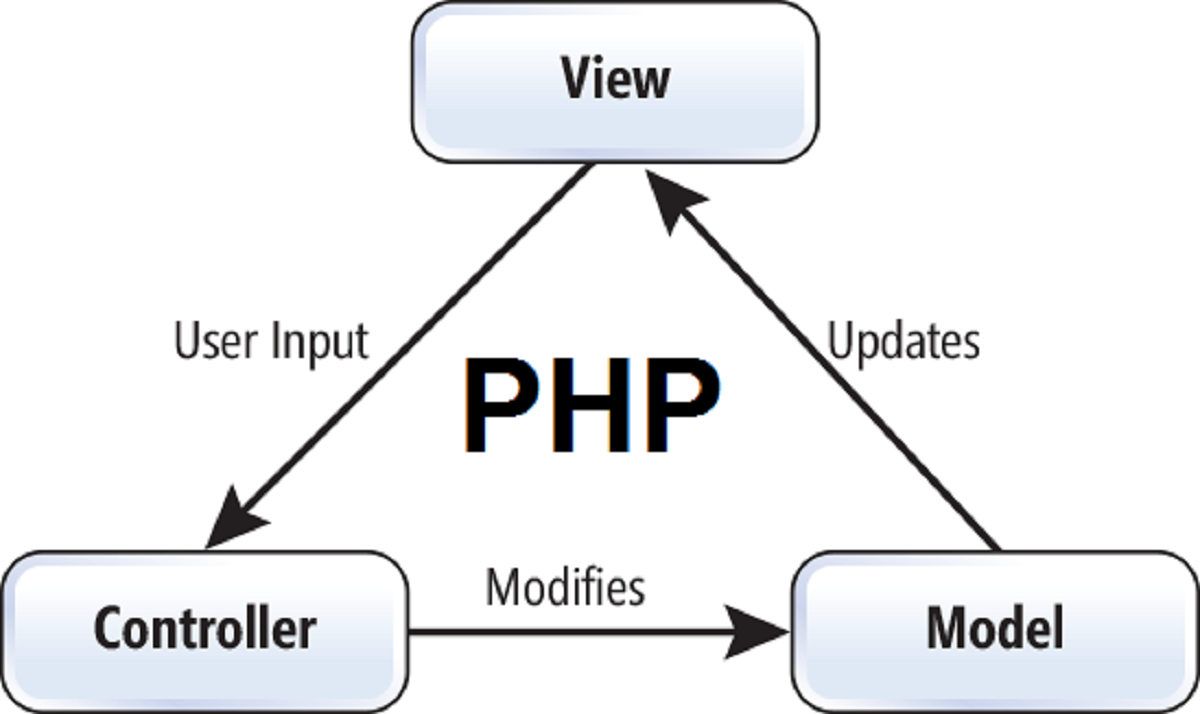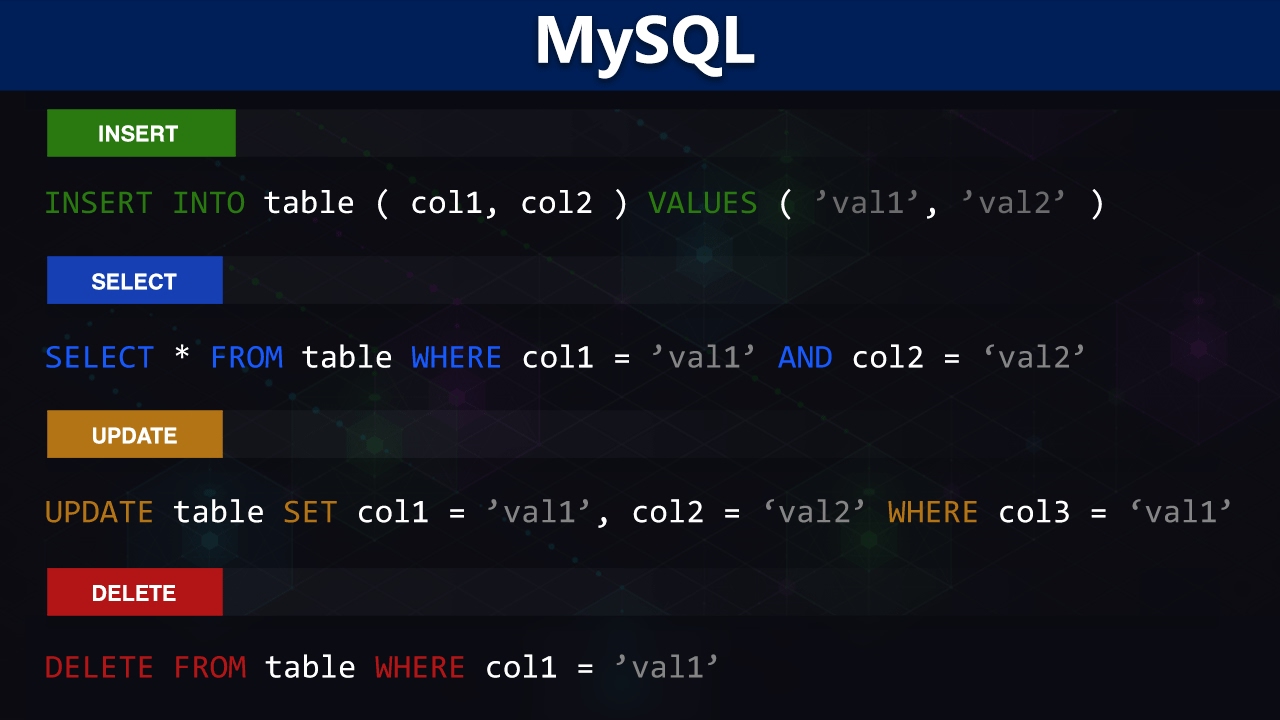Introduction
When working with PHP, you may come across situations where you need to handle raw data from an HTTP request. This is where the PHP “php://input” stream comes in handy. The php://input stream allows you to access the raw request body data, regardless of the content type, making it a versatile tool for handling different types of data.
Whether you’re building a RESTful API, processing form submissions, or handling file uploads, understanding how to use the php://input stream can greatly simplify your PHP programming tasks and provide you with greater control over incoming data.
In this article, we’ll explore the php://input stream and how it can be used in PHP applications. We’ll discuss its purpose, how it works, and why you should consider using it in your projects. We’ll also provide a step-by-step guide on how to use the php://input stream effectively, as well as how to handle errors that may occur during its usage.
By the end of this article, you’ll have a solid understanding of the php://input stream and be equipped with the knowledge to leverage its power in your PHP programming endeavors.
What is PHP://Input?
The “php://input” is a special stream provided by PHP that allows you to access the raw body of an incoming HTTP request. It provides a way to retrieve the data sent to the server, regardless of the content type of the request.
When a request is made to a PHP script, whether it’s submitted through a form, sent via AJAX, or any other method, the data is usually processed and made available through the $_POST or $_GET superglobal arrays. However, there might be instances where the data needs to be handled in its raw form without any processing or parsing. This is where the php://input stream becomes useful.
The php://input stream can be accessed just like any other file in PHP, using file functions or file stream APIs. It provides a read-only stream that contains the request body data as it was sent by the client. This means that you can access and manipulate the raw data directly without any automatic parsing or URL decoding.
It’s important to note that the php://input stream is only available for HTTP POST, PUT, and PATCH requests, as these methods usually carry data in the request body. For GET requests, the request parameters are available through the $_GET superglobal array, and for file uploads, the request data can be accessed through the $_FILES superglobal array.
Now that we have a basic understanding of what the php://input stream is, let’s delve into how it works and why it can be a valuable tool for handling incoming data in PHP applications.
How Does PHP://Input Work?
The php://input stream works by providing a way for PHP scripts to directly access and read the raw body of an HTTP request. When a request is made to a PHP script, the server receives the request headers and the request body. The request body contains the data sent by the client, such as form field values or JSON payloads.
By default, PHP automatically parses the request body and populates the $_POST and $_GET superglobal arrays with the appropriate data based on the content type of the request. However, there are situations where you may want to handle the raw data as is, without any automatic parsing or encoding. This is where the php://input stream comes into play.
The php://input stream is a read-only stream that allows you to access the raw request body data. It provides a way to bypass the automatic parsing and encoding performed by PHP, giving you direct access to the original data sent by the client.
To use the php://input stream, you can simply open it like any other file using file functions or file stream APIs. Once the stream is open, you can read the data from it using functions like fread(), file_get_contents(), or fgets().
It’s important to note that the php://input stream is a one-time-only stream. This means that once you read the data from the stream, it cannot be read again. If you need to access the request body multiple times, you need to store it in a variable or a file before reading it.
The php://input stream is particularly useful when dealing with custom data formats or when you want to perform your own parsing and data manipulation. It allows you to have full control over how the data is processed and handled in your PHP application.
In the next section, we will discuss why you should consider using the php://input stream in your PHP projects and the benefits it brings.
Why Should You Use PHP://Input?
The php://input stream offers several advantages that make it a valuable tool for handling incoming data in PHP applications. Here are a few reasons why you should consider using the php://input stream:
1. Versatility: The php://input stream allows you to handle data in its raw form, regardless of the content type of the request. This means that you can easily handle different types of data, such as form submissions, AJAX requests, or even custom data formats. You’re not limited to the automatic parsing and decoding performed by PHP, giving you more flexibility in handling incoming data.
2. Custom Parsing: With the php://input stream, you have complete control over how the data is parsed and processed. You can create your own parsing logic to extract specific information from the raw data. This is particularly useful when working with non-standard data formats or when you need to perform complex data manipulation before storing or using the data.
3. Raw Data Manipulation: The php://input stream allows you to manipulate the raw data directly, without any automatic encoding or decoding. This is beneficial when you need to perform specific transformations or modifications to the data before further processing. You can work with the data as is, making it easier to meet the specific requirements of your application.
4. Security: By using the php://input stream, you can implement additional security measures to prevent injection attacks or malicious data manipulation. Since the data is accessed in its raw form, you have the opportunity to sanitize and validate it before processing. This helps protect your application from potential vulnerabilities and ensures the integrity of the received data.
5. Efficiency: In some cases, the automatic parsing and populating of the $_POST or $_GET superglobal arrays may not be necessary. By using the php://input stream, you can skip this step and directly access the data you need, potentially improving the performance and efficiency of your code.
Overall, the php://input stream provides you with greater flexibility, control, and security when handling incoming data in your PHP applications. It allows you to work with the raw data, implement custom parsing logic, and ensure the integrity of the received information.
Now that we understand the benefits of using the php://input stream, let’s move on to the next section, where we will explore how to use it in your PHP code.
How to Use PHP://Input
Using the php://input stream in your PHP code is a straightforward process. Here, we will provide a step-by-step guide on how to effectively utilize the php://input stream:
Step 1: Opening the Input Stream
To access the php://input stream, you need to open it using file functions or file stream APIs. You can use functions like fopen() or file_get_contents() to open the stream. Here’s an example:
php
$inputStream = fopen(“php://input”, “r”);
This code opens the php://input stream in read mode and assigns it to the $inputStream variable.
Step 2: Reading the Input Stream
Once the input stream is open, you can read the data from it using functions like fread(), file_get_contents(), or fgets(). Here’s an example:
php
$data = file_get_contents(“php://input”);
This code reads the entire contents of the php://input stream and assigns it to the $data variable.
Step 3: Closing the Input Stream
After you have finished working with the input stream, it’s a good practice to close it to free up system resources. You can use the fclose() function to close the stream. Here’s an example:
php
fclose($inputStream);
This code closes the input stream stored in the $inputStream variable.
Handling Errors with PHP://Input
It’s important to consider error handling when working with the php://input stream. If the open operation fails, the functions will return false, indicating an error. You should check for these error conditions and handle them accordingly in your code. You can use conditional statements or try-catch blocks to handle any potential errors.
Additionally, it’s important to note that the php://input stream is a one-time-only stream, meaning that you can only read its contents once. If you need to access the data multiple times, you should store it in a variable or a file before reading it from the stream.
Now that you have a clear understanding of how to use the php://input stream, you can start incorporating it into your PHP projects to handle raw incoming data efficiently.
Step 1: Opening the Input Stream
The first step in utilizing the php://input stream is to open it in your PHP code. This allows you to access the raw data of the incoming HTTP request. Opening the input stream is a simple process, and you can use file functions or file stream APIs to accomplish this.
To open the php://input stream, you need to specify the “php://input” file path and the desired file mode. The file mode determines whether you want to read (“r”), write (“w”), append (“a”), or perform other operations on the stream.
Here’s an example of how you can open the php://input stream using the fopen() function:
php
$inputStream = fopen(“php://input”, “r”);
In this example, we use the “r” mode to open the input stream in read-only mode. The fopen() function returns a resource handle, which we assign to the $inputStream variable. This handle represents the opened stream and can be used to perform further operations.
Alternatively, if you prefer a more concise approach, you can use the file_get_contents() function to directly retrieve the contents of the input stream without explicitly opening it:
php
$data = file_get_contents(“php://input”);
This code reads the entire contents of the php://input stream and assigns it to the $data variable. Unlike using fopen(), you don’t need to explicitly open and close the stream when using file_get_contents().
It’s important to ensure that the opening of the input stream is successful before proceeding with further operations. If the open operation fails, the functions will return false, indicating an error. You should check for these error conditions and handle them accordingly in your code. You can use conditional statements or try-catch blocks to handle any potential errors that may occur during stream opening.
By successfully opening the php://input stream, you are now ready to move on to the next step: reading the input data. We will explore this step in detail in the next section.
Step 2: Reading the Input Stream
Once you have successfully opened the php://input stream in your PHP code, the next step is to read the data from the stream. The php://input stream provides a read-only view of the raw body of the HTTP request, allowing you to access and process the data as needed.
There are several ways to read the contents of the php://input stream. The most common approach is to use functions like fread(), file_get_contents(), or fgets(). These functions allow you to read the data from the stream in various ways.
Here’s an example of how you can read the entire contents of the input stream using the file_get_contents() function:
php
$data = file_get_contents(“php://input”);
In this example, the file_get_contents() function reads the entire content of the php://input stream and assigns it to the $data variable. The $data variable will then hold the raw data of the HTTP request body.
If you prefer to read the data in smaller chunks instead of retrieving the entire contents at once, you can use the fread() function. Here’s an example:
php
$chunkSize = 1024; // Specify the desired chunk size
$buffer = ”;
$inputStream = fopen(“php://input”, “r”);
while (!feof($inputStream)) {
$buffer .= fread($inputStream, $chunkSize);
}
fclose($inputStream);
In this example, we specify a chunk size of 1024 bytes and create an empty buffer variable to store the read data. We then use a while loop with the feof() function to continuously read the stream until the end of file is reached. The fread() function reads the data in chunks and appends it to the buffer variable. Finally, we close the input stream using fclose().
Once you have successfully read the data from the php://input stream, you can further process, manipulate, or validate it according to your specific requirements. You can parse the data, perform data transformations, or store it in a database, among other possibilities.
It’s important to note that the php://input stream is a one-time-only stream. This means that once you have read the data from the stream, it cannot be read again. If you need to access the data multiple times, you should store it in a variable or a file for subsequent use.
With the ability to read the raw data from the php://input stream, you can effectively handle the incoming data in your PHP code and proceed with the necessary operations. In the next step, we will cover how to properly close the input stream to free up system resources.
Step 3: Closing the Input Stream
After you have finished working with the php://input stream in your PHP code, it’s considered good practice to close the stream to free up system resources. Properly closing the input stream ensures efficient memory usage and prevents potential resource leaks.
To close the input stream, you can use the fclose() function. This function takes as input the resource handle that represents the opened stream and performs the necessary cleanup operations.
Here’s an example of how you can close the input stream after reading the data:
php
fclose($inputStream);
In this example, $inputStream represents the resource handle of the opened input stream. By calling fclose($inputStream), the input stream is closed and any associated system resources are released.
It’s important to note that closing the input stream is optional in most cases. PHP automatically closes all open streams when the script finishes execution. However, closing the input stream explicitly is considered a best practice as it ensures timely resource cleanup and may improve the overall performance of your application.
It’s also worth mentioning that if you are using the file_get_contents() function to directly retrieve the contents of the input stream without explicitly opening it with fopen(), you don’t need to explicitly close the stream. The file_get_contents() function handles the opening and closing of the stream internally.
By properly closing the input stream, you ensure that resources are released promptly and efficiently. This can be especially beneficial in scenarios where you have a large number of requests or when working in resource-constrained environments.
Now that you have learned how to open, read, and close the php://input stream in your PHP code, you have a solid foundation for effectively handling raw data from incoming HTTP requests. The php://input stream offers you greater control and flexibility in managing incoming data, allowing you to build powerful and robust PHP applications.
Handling Errors with PHP://Input
When working with the php://input stream in PHP, it is essential to handle potential errors that may occur during its usage. By implementing proper error handling, you can identify and address any issues that may arise when opening, reading, or closing the input stream.
One common error that can occur when working with the input stream is the failure to open the stream. If the fopen() function or file_get_contents() function fails to open the php://input stream, it will return false. Therefore, it’s crucial to check the return value and handle the error accordingly.
You can use conditional statements to check if the stream opening was successful:
php
$inputStream = fopen(“php://input”, “r”);
if ($inputStream === false) {
// Error handling code
// Display an error message, log the error, or perform appropriate actions
exit(“Failed to open php://input stream”);
}
In this example, we use the strict comparison operator (===) to check if the $inputStream variable holds the value false. If it does, it means that the stream opening was unsuccessful, and we can proceed to handle the error accordingly. You might choose to display an error message, log the error for further investigation, or take appropriate actions specific to your application.
Additionally, it’s important to note that the php://input stream is a one-time-only stream. Once you have read the data from the stream, it cannot be read again. If you attempt to read the stream multiple times, you will receive an empty result. Therefore, you should store the data in a variable or a file if you need to access it repeatedly.
By ensuring proper error handling and taking into account the one-time-only nature of the php://input stream, you can write more robust code that gracefully handles any potential issues that may occur during the processing of incoming data.
With the knowledge of how to handle errors that may arise when working with the php://input stream, you can write more reliable and secure PHP applications that effectively process and manipulate raw data from incoming HTTP requests.
Conclusion
The php://input stream is a powerful tool in PHP that allows you to handle the raw data from incoming HTTP requests. By providing direct access to the request body, it offers greater flexibility, versatility, and control over how you process and manipulate incoming data.
In this article, we explored what the php://input stream is and how it works. We discussed its purpose and highlighted the benefits of using it in PHP applications. We also provided a step-by-step guide on how to effectively use the php://input stream, including opening the stream, reading the data, and closing the stream.
The php://input stream offers several advantages. It enables you to work with different types of data, implement custom parsing logic, perform raw data manipulation, and enhance the security of your application. Whether you’re building RESTful APIs, processing form submissions, or handling file uploads, the php://input stream can be a valuable asset in your PHP programming toolkit.
However, it’s important to handle potential errors that may occur when working with the php://input stream. By implementing proper error handling, you can address issues such as failed stream opening and ensure the reliability and stability of your application.
With a clear understanding of the php://input stream and how to use it effectively, you have the knowledge and tools necessary to handle incoming data in PHP applications with confidence and efficiency.
So, make the most of the php://input stream to process raw data, customize your data handling requirements, and build robust PHP applications that meet your specific needs.

























